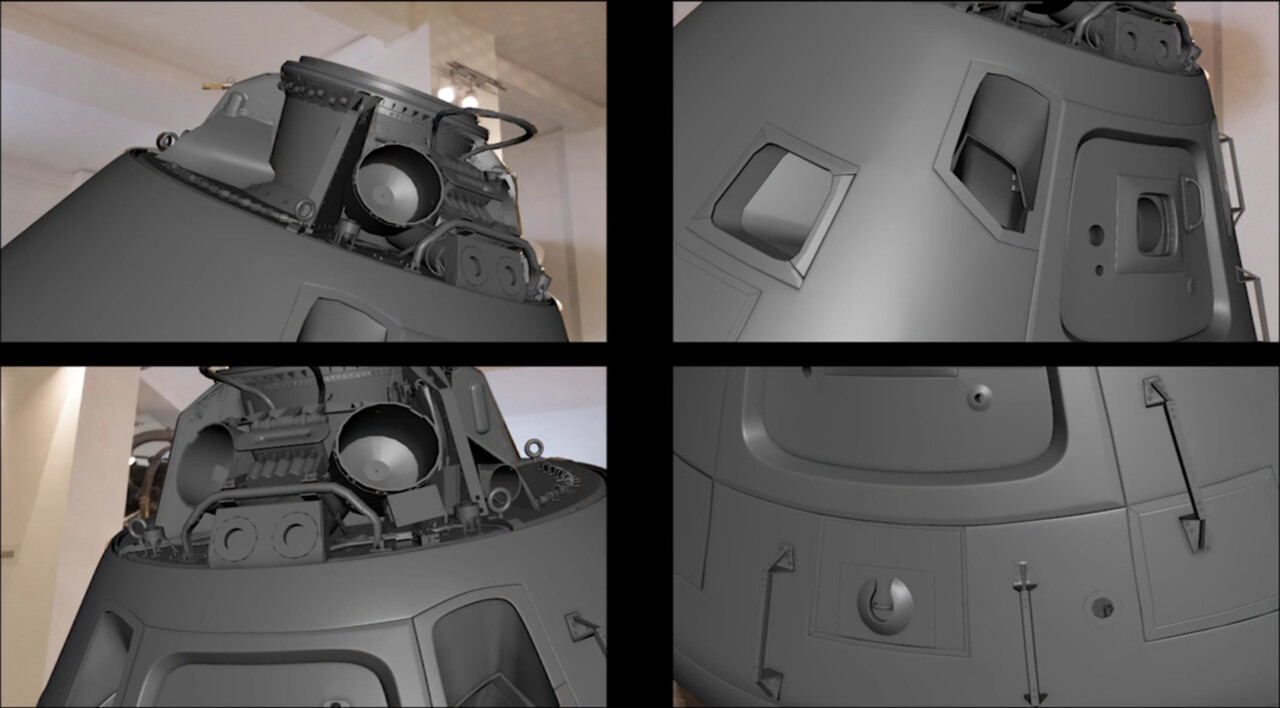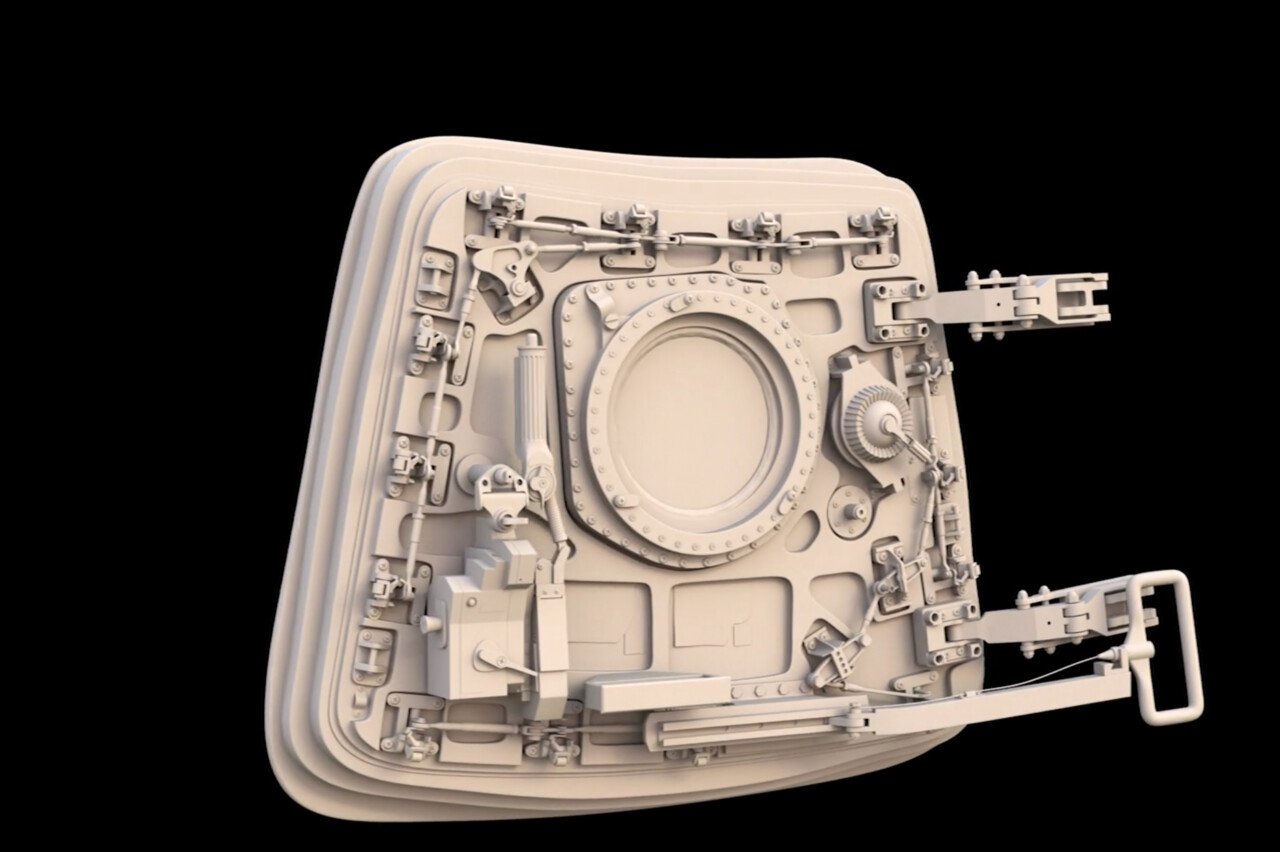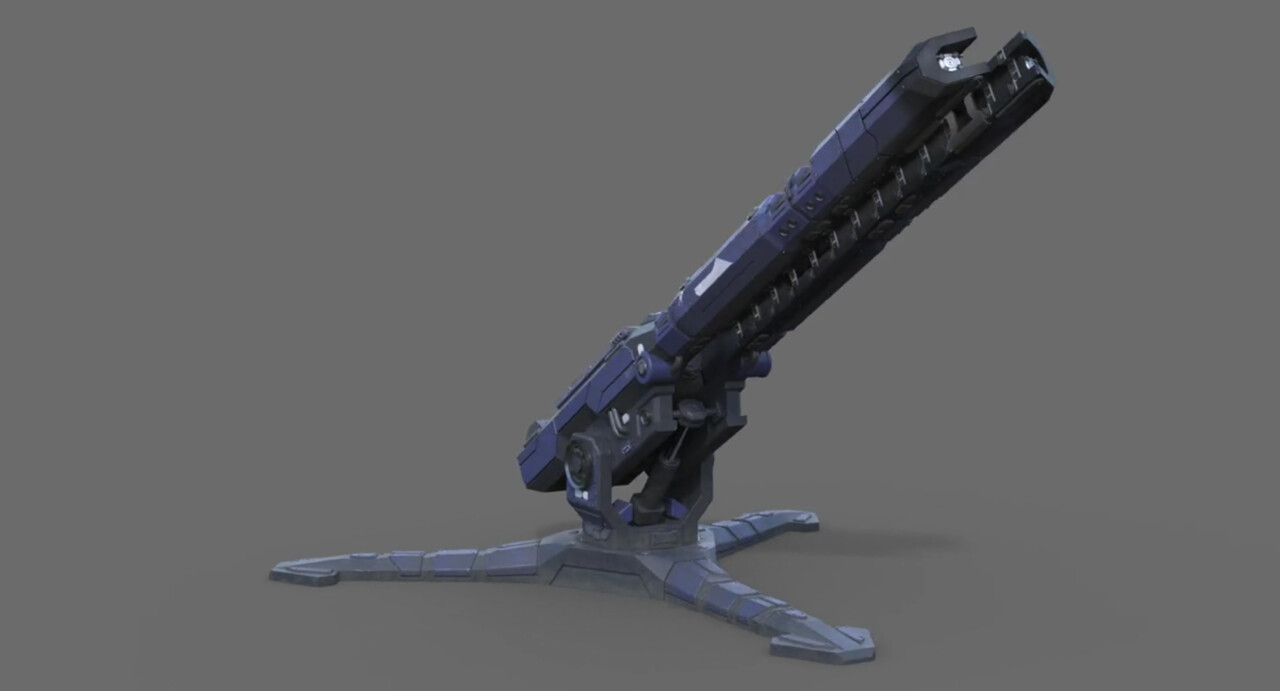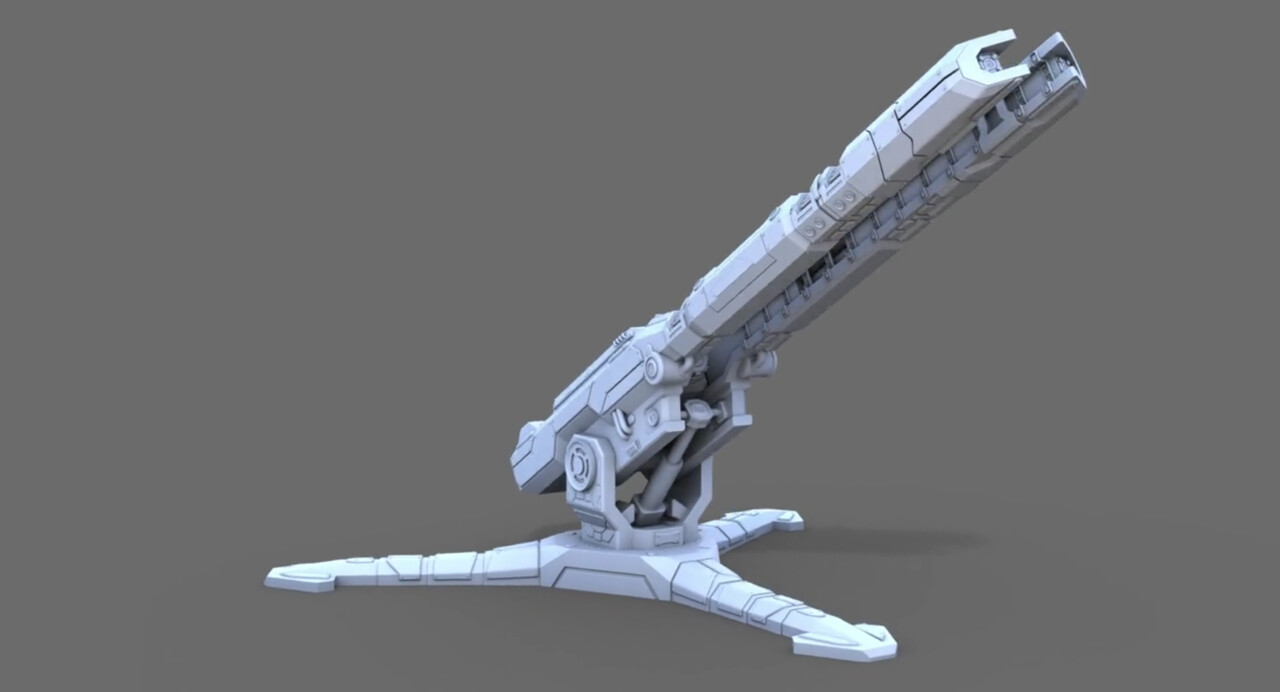The last few years many people have sent me their reels for feedback and asked my general thoughts on what makes a good reel to get a job as a Modeler in the film industry. I thought I would do a source of information on what I usually tell people on what I think makes a strong folio or reel. This is entirely my own opinion though, others opinions may differ and many people have gotten jobs by not doing what I am about to write. This will just be an article on what I feel gives you the best shot if you specifically want to be a modeler in the film industry.
What Should I Put In My Reel
Firstly it is best to know exactly what you are after and tailor your reel towards it. There are different folios based on different roles. If you want to purely be a modeller and your texture work isnt as strong as your modelling. I would advise not showing it as it may pull down your folio. If you want to do modeling and texturing and are similar level with both then show both. As I am purely a modeler this article will focus on the model side. I wouldn't bother including any other disciplines that aren't part of assets. There is no need to include animation, fx or comp etc. Make your folio EXACTLY for what you are after.
In VFX the goal is photo realism and being based on the real world. If you want to go in to VFX I highly encourage your portfolio to be this way. If you fill your folio with mostly stylized work, we don't know if you will be able to adapt to the look and quality needed for VFX. I am not saying there is anything wrong with that if you want to work for say Blizzard or in game cinematics. Tailor your projects towards the type of job you want.
I would encourage students to NOT build from concepts (ESPECIALLY their own) and focus on building real world objects. The advantage of building from the real world is you have unlimited reference of the subjects and all of the information is there right in front of you. I will be talking about Zak Boxall's demo reel quite a lot during this post as he has possibly the strongest student reel I have seen and he walked right out of University in to ILM London.
You can see from the reel that Zak simply has to just replicate what he sees in front of him, you will notice they are all subjects from the real world. To be honest this will be your job most of the time, especially starting out as a junior. Your reel shouldn't be showing that you can make stuff up, it should be demonstrating that if you are given a task that you can do exactly what is in front of you. In film in general this is quite normal, there are many times we need to replicate something that already exists whether it be a prop on set or a vehicle that already exists in the real world. We must match it, if you can demonstrate that in your reel it goes a long way. The problem with personal concepts is we don't know if you cheated and couldn't make the shapes correctly.
The big problem I see with people trying to make other peoples concepts or do their own is that they cant pull it off and make it look good. You could have flawless topology but if the actual execution is not successful it hurts you a lot. With making a concept you need to do a lot of problem solving yourself, fill in the blanks and make it look like it can actually function in the real world. If you don't have the artistic eye to pull it off, it can be very noticeable by professionals that do. This eye will come with time so i am not saying never do your own personal projects, just try get in to the industry first. The way you actually build this eye though, is to look at the real world.
This is the main benefit by building from the real world while you are starting out. Not only are you making a folio tailored to getting in to the VFX industry as a modeller, you are also gaining experience in how the real world works. This is what builds your artistic and problem solving eye. You could just make up a plane and hope it works, or you could physically go to a museum and see a real world aircraft yourself. I went to an airshow when I was living in London and actually walked up to some US Air Force mechanics and spoke to them for about 30 minutes pointing at every little aerial and cool shape asking what that does. Now when I work on real world aircraft and even my own concepts, I have an understanding of what extra details I can use to add that level of realism.
It is also better to make something small to a high finish instead of make something massive that lacks detail. What we are looking for is quality and attention to detail. How much are you really observing and able to recreate from your subject. It is a delicate balance, you don't want to make something too simple that it wont stand out or be impressive. You also dont want to pick something so large it will take you 6 months to make. A good example is from Zak below who built a very nice complex interior of the door.
Film vs Game
I wont talk too much about game reels because I don't know too much about them but there are some things to leave out when it comes to film.
Firstly we don't care about polygon count and we never use the term tri's. You wont need to put your poly count on your reel, the quality of your topology is good enough for us to judge. Since in film in the end our 3D model is still going to become a 2D image anyway and not a real time asset. We don't think too much about the polycount unless it gets ridiculous.
I would also not add render times, its irrelevant.
I would also not put game assets in your VFX reel. It doesn't sell you any more to the person looking at it and might just make things confusing. Make everything in your reel a SUBD mesh (made to subdivide at render time). I did a few videos on the fundamentals of SUBD which you can find here. https://www.artstation.com/artwork/Bl9vk
Don't put POLY assets in your reel unless its a large environment and seen at distance.
Presentation
Your presentation of your reel is as important as the work itself in my opinion. It shows the quality of the eye of the person who has made it. If you don't put effort into how you present yourself. The viewer may question how you present yourself at work or if you even have the eye for what looks good.
You MUST put your best work first. People don't have much time on their hands and your entire skill level is going to be judged instantly. It is very hard to get the first impression changed if you don't start out strong. Some people might simply close your reel and not look further if it doesn't hit the quality they are looking for. Usually it is best to put your best works first with a very strong piece also at the end to give that last good impression. Overall your work quality should be consistent though. Don't put anything in your reel that will make the person question your overall quality. You will still be judged by your worst work at the end of the day.
Start your reel instantly if you want to be a modeller. Just have your name then straight in to the work. Don't waste time with fancy animated title cards and logos, just go straight to the work. Also at the end of the reel have your contact clear and easy to see . Your reel needs to be straight to the point.
Below is a very impressive way to display your work that Zak has in his reel. I have no idea why I don't see this more in student reels as this is literally what we have to do at work. Zak went to a museum and took the photos himself so he knows the focal length and can get the angles he wants. He then modeled directly on top of the photos and has demonstrated that he can do this with several things in his reel. Not only is this showing us he can copy exactly what is needed ( The main point of the reel). He has also demonstrated that he has the skill to line up cameras in Maya. Something that we also have to do quite a lot. This to me is the best way to demonstrate your work and gets massive points from me.
Below I have linked one of my stand out students from when I taught at the Animation Workshop in Denmark. Magnus did a full VFX course so had to include things like comp and tracking etc but I want you to focus on how he has presented his models. He did exactly what I suggested he do. He did do his own concept and pulled it off quite successfully during the course. It is a bit different though when you have a professional with you every day for 2 weeks to give guidance and thoughts on design.
For making a modelling Reel the most important things you need to show are your Topology and grey Render. You can show turntables or still images, either work. What I like that Magnus has done is he has shown a full turn table of the asset with 4 different passes including the Full asset, the clay render, the pre subdivided wireframe and the UV checker texture. He has also included close up renders with each pass as stills so you really get a good look at the quality of the work. This is a good way to present individual assets.
We also present our work to supervisors in multiple ways like this too in film. We don't usually have to show wireframes etc but lots of times we run a full turntable of the asset plus included renders from specific close camera angles we might see it in the film.
FULL ASSET
The beauty render is just a cool way to present your work in all its glory with its textures. Although it is nice to see, for a modeller the more important images are the ones below. This is unless you also want to focus on texturing too
CLAY RENDER
A clay render is good as we can see what the raw model looks like and how the light runs across the surfaces. It helps us see you have modeled it correctly and there isn't obvious pinching or warping. The benefit of seeing this without textures is the textures could be hiding some bad modelling or carrying the model in some areas like relying too much on displacement.
PRE SUBDIVIDED WIREFRAME
I think this is the most important thing you need to get across in your reel. You could have a nice looking render but if your topology is unusable, then it is very hard to justify hiring the person. If you show your topology off clearly and it is good, we can see you are confident in your skills and you aren't trying to hide the topology. This is entirely our job as a modeller so this is the most important thing you need to show in your reel and most clear. I personally also rather see the pre subdivided mesh because I can see exactly what you have done. If you subdivide the mesh for the turntable it could hide a lot of flaws as it smooths everything out and turns everything in to quads for you.
CHECKER TEXTURE
This one is the least important but it is a nice touch in selling yourself. Depending on the studio the modeller or the texture artist will do the UVs. If you can show you can do clean efficient UV it is a big plus. Every studio lays out their UDIMs differently but something you can show like in the image above is that the scale is consistent and flows in a logical way. Panels next to each other flow together etc.
Final Thoughts
I hope this little article has been helpful to some people. These are ultimately just my thoughts and my personal opinion on what makes a good reel. There isn't only one way to make your reel and making your reel this way doesn't guarantee you a job. This industry is very fun but also very unpredictable, just because you don't get picked up right away doesn't mean your reel is bad. Timing and connections play a large part in breaking in to this industry. I know it may feel impossible at times but just keep pushing and developing your work and you will get in eventually. These are just a bunch of guides that i feel will help give you the best chance. Any questions or thoughts leave them below and I will try answer them.







